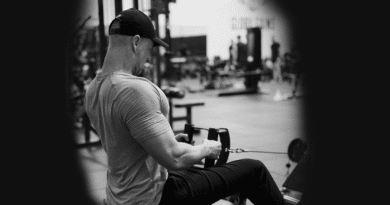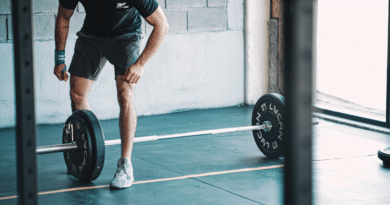Reverse Grip Pulldown Best Guide – Benefits, Muscles Worked and Technique
This extensive guide will teach you everything you need to know about the Reverse Grip Pulldown.
What is the Reverse Grip Pulldown?
A variation of the Lat Pulldown, the Reverse Grip Pulldown is a cable based pulling exercise that targets and develops the muscles of the back, shoulders and arms.
It was popularised in the 90s by successful UK multiple times Mr Olympia winner Dorian Yates.
Versatile and useful, the exercise can be included during back workouts, upper body workouts, full body workouts and pull workouts.
Muscles Worked by the Reverse Grip Pulldown
The exercise mainly tests and strengthens the following muscle groups:
- Lats
- Biceps
- Grip
- Posterior deltoid
- Teres major (one of the back muscles that assists latissimus dorsi)
- Rhomboids
The back in general benefits greatly from multiple exercises that stimulate growth and adaption in a variety of ways.

Benefits of the Reverse Grip Pulldown
An underutilised exercise, the movement has many benefits.
The Movement Brings the Biceps into Back Day
The mechanics of the exercise force the biceps to work hard in order to move the weight through the full range of motion.
The reverse grip hand positioning naturally incorporates the biceps more in the exercise.
If you train back and biceps together, like many bodybuilding splits, then this is an effective exercise to use to maximise results in the minimum amount of time.
Builds A Stronger Back
As a tough upper back pulling exercise, this variation will strengthen your body. A strong back will help your posture, protect your spine and reduce the risk of injury.
Creates Muscle Mass
The movement will help you with your muscle mass building goals.
Remember to move slowly to maximise the time under tension.
Go for 8 – 12 reps for 3 – 5 sets with rest periods of 30 – 45 seconds.
A Great Finisher Exercise
The exercise can be used as a finisher at the end of a training session. Working with the cable will create tension for sustained periods of time and it will torch back the back and biceps to complete fatigue.

How to do the Reverse Grip Pulldown
Use the following instructions to perform the Reverse Grip Pulldown.
- Attach a straight bar attachment to the cable machine.
- Sit down and wedge your thighs under the pads
- Select the weight using the pin on the weights stack
- Grip the bar with an underhand, pronated grip so that the palms face your own body
- Inhale and brace your core, grip, glutes and back
- Pull your elbows down and back and squeeze the shoulder blades together
- Bring the bar down slowly until it touches the chest
- Pause and tense the biceps and the back as tightly as possible
- Return the bar to the starting position and exhale
- Repeat for the desired number of repetitions
Reverse Grip Pulldown Technique Tips
Maintain a straight spine at all times. Don’t round the back.
Don’t allow the back to hyperextend either.
Make sure to use a full range of motion for every rep so that you maximise results.
Keep your core tight in order to stabilise and control the movement.
Don’t use any momentum to pull the weight. Make sure that you control the weight properly at all times.
Don’t let your head stick forwards when you pull the weight.
Let the shoulder internally rotate slightly at the top of the movement.
Some lifters may fatigue the biceps while not getting enough of a resistance for the back muscles (because they are larger and more powerful). If this happens then try switching to a false grip (with your thumbs not wrapped around the bar) or using straps.
Reverse Grip Pulldown Variations
Experiment with these variations if you want to add new stimulus into your training.
Wide Grip
This variation will target the inner biceps muscle and help to build the peak.
Narrow Grip
The narrow grip variation will improve the inner bicep and add thickness to the arms in general.
Pause Reps
Pause reps or dead stop reps are an excellent way to create more time under tension and make sure that momentum is never being employed to assist any part of the rep.
They can also help you find parts of the movement that may be sticking points and particularly difficult for the lifter.
This is good news because uncovering weaknesses is the first step in solving them.
Reverse Grip Pulldown Alternatives
These alternatives can be substituted into your training when you want to mix things up or cannot perform the original exercise for any reason.

Chin Ups
An excellent bodyweight exercise for hitting the biceps and back, Chin Ups will also build upper body strength and muscle.
A handy ancillary benefit is that they also augment grip strength.
Supinated Grip Barbell Rows
Again, the supinated hand positioning brings the biceps into play. This variation can also be done with pause reps for added difficulty.
Seated Supinated Cable Rows
An effective variation, this movement helps your core and pulling power.
Sets and Reps
If muscle mass is your goal, then aim for 3 – 5 sets of 8 – 12 reps.
Want to build strength? Go for 3 – 5 sets of 4 – 6 reps.
FAQs
Still got questions? Scroll through our FAQs.
Is Reverse Grip Lat Pulldown Better?
It depends on your goals. The Wide Grip Lat Pulldown is better for back development as the pronated grip shifts all focus to the back muscles.
The Reverse Grip Pulldown also targets the back, to a slightly lesser degree, but also recruits the biceps and working the arms hard.
Both are excellent exercises with slightly different results. Once you know what you want to achieve then you can work out when and why to use them.
Are Reverse Grip Pulldowns Good?
Yes, they are an excellent exercise to strengthen the back, biceps, grip and forearms.
They also enhance stability in the lower back and core.
Are Weighted Chin Ups or Reverse Grip Pulldowns Better for Biceps?
These exercises both ulitise a supinated, underhand grip and work similar muscle groups however they operate differently.
Weighted Chin Ups are hard, and demand that the athlete can already perform Chin Ups effectively even before they affix additional weight. The percentage of athletes that can do this with proper form is not high.
The latter exercise allows for a much wider strength spectrum. Any athlete, regardless of their current strength level, can use the Reverse Grip Pulldown to enhance their biceps and back.
Is the Supinated or Pronated Grip Lat Pulldown Safer?
- Supinated is where the palms are face towards you (like a Bicep Curl)
- Pronated is where the palms face away from you (like a Pull Up)
Both these grip styles are safe for you and your body. Make sure you don’t bring the elbows too far behind the body.
Also, everyone is different when it comes to physiology. If a certain grip style or width feels bad for you then there are plenty of others to choose from.
Learn More
Improve your lower body strength.





Comments are closed.